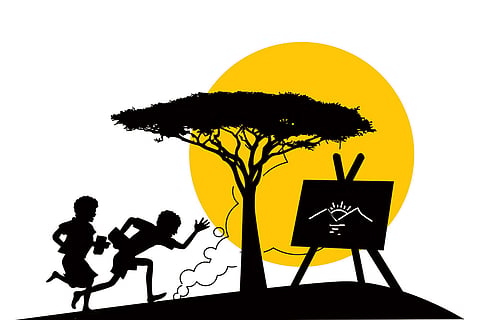The arrival and departure areas at Juba International airport are large tents through which hot air blows all day long. The degree of chaos differs depending on the number of planes arriving or taking off at a point. With many parts of the country under rebel control, road journeys are less and less possible, so scores of operators offer light planes to ferry people. The tents are full of people…arriving, waiting, lugging food, kids and elders often sitting on baggage (there are only a few bent and buckled seats). The scene hasn’t changed much from the time I first travelled to South Sudan a month after it became the world’s newest nation.
In July 2011, South Sudan was in a state of euphoria. After decades of conflict with the north, it was finally free. And it sat on oil reserves that accounted for 85 per cent of undivided Sudan’s production. With other mineral resources (iron ore, copper) and the potential of vast areas that could be irrigated by the Nile and its many tributaries, there was cause for optimism. The government wanted to offer a peace dividend in the form of a cash transfer to each family with children below age five. I was part of a team invited to help with designing a system to do this. We made our plans. We consulted Kenyan banks that had designed and operated the world’s first mobile money transfer system, the M-Pesa. We drew up the outline of a civil registration system that could function from the grassroots. But all the plans went up in smoke. Conflict took only a few months coming. Sudanese forces occupied oil fields in the South, and war broke out.
A hard-brokered peace in 2013 saw us back in South Sudan. This time the government wanted help on a new law for civil registration. We brought in Mundkur Law Partners from Bangalore, their young lawyers drew up a fine draft and once again we left feeling sanguine. Again, it took just months. Conflict broke out between two major tribal groups—the Dinka, loyal to President Salva Kiir, and the Neur, loyal to Vice-President Riek Macher—after Kiir sacked his V-P in mid-2013. It hasn’t ebbed since; more tribal groups have joined in. A second peace deal (2015) lasted only till fighting erupted in the capital, Juba, in 2016. Negotiations in Addis Ababa saw the most recent truce (Dec 21, 2017), with a pact on a transitional government, a new constitution and elections. But on January 6, a military post outside Juba was attacked by rebels and several people killed.
Over a third of the 12 million South Sudanese have fled their homes. The UNHCR estimates that over a million have taken refuge in Uganda. About 1.9 million are internally displaced, in safe zones like the ‘Protection of Civilian’ areas near UNPKF encampments. Disruption of life on such a mammoth scale naturally affects agriculture and animal husbandry in a country with one of the world’s largest pastoral communities. Compounding this: the worst drought in 60 years following failure of rains for three years in succession in the Greater Horn of Africa. With key donors like the US pulling the plug on the UN, 2018 looks very dire. Lean season begins in two months.
